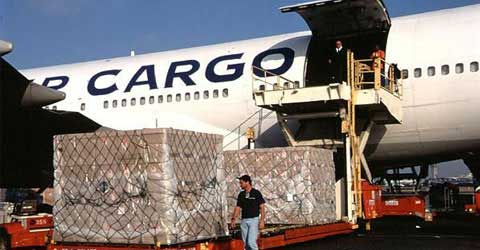
Modest slowdown in air freight market
According to the latest data released by the International Air Transport Association (IATA), air freight markets rose 3.2 percent in April 2014 compared to the same month a year ago. However, this is a slowdown in growth when compared to March this year when air freight volumes were up 6.2 percent year-on-year. Although growth compared […]

According to the latest data released by the International Air Transport Association (IATA), air freight markets rose 3.2 percent in April 2014 compared to the same month a year ago. However, this is a slowdown in growth when compared to March this year when air freight volumes were up 6.2 percent year-on-year. Although growth compared to a year ago remains solid, the rates of increase have shown a decline.
The IATA-released numbers show that even after adjusting for impacts of Easter, air freight volumes moderated in April, dipping 1.1 percent compared to March. Although levels are still in a range not seen since early 2011, Freight Tonne Kilometers (FTK) are slightly below January, which means there has been no rise in volumes so far this year. Levels still point toward growth, but at the weakest pace for the past five months. World trade growth has also slowed over recent months. “However, momentum in advanced economies remains intact, and export orders still point to expansion. This suggests that current sluggishness in the demand drivers is likely temporary,” said IATA in its press statement.
Among the regional results Asia Pacific carriers recorded a solid 5.2 percent increase in FTKs in April compared to a year ago. But the month-to-month comparisons show a decline this April compared to March, suggesting the year-on-year result is likely due to weaker volumes a year ago rather than current growth. Looking ahead, continued weakness in Chinese manufacturing activity remains a downside risk for regional economic performance, which ultimately would impact trade growth and air freight demand for local carriers. Middle Eastern carriers reported that air cargo demand expanded 8.7 percent compared to the previous April. This is slightly slower growth compared to previous months, but still easily the strongest growth of any region. African airlines saw air cargo demand grow by 2.9 percent. Further growth was held back by weakness in key economies in the region, such as South Africa. Airlines in Latin America and Europe recorded contraction in FTKs year-on-year, 6.5 percent and 0.7 percent, respectively. This is likely the impact of a slowdown in prior improvements in regional trade activity.
“Trading conditions for air freight are difficult. Overall, business activity and trade have shifted down a gear after a strong end to 2013. And this is taking its toll on growth in the air cargo sector. Developed economies are still maintaining post-recession momentum and the expectation is for a stronger finish to the year,” said Tony Tyler, IATA’s Director General and CEO.
The air cargo sector is committed to improving its attractiveness to shippers through efficiency. The goal is to reduce shipping times by 48 hours before 2020. A centerpiece of this effort is the e-freight initiative which seeks to modernize the air cargo sector with paperless business processes. “Air cargo’s sales proposition is speed, and cumbersome processes are holding us back. In March we reached a significant milestone. For the first time, the e-Air Waybill (e-AWB) was used for over 200,000 shipments. That’s good news but we still have a long way to go,” said Tyler.

